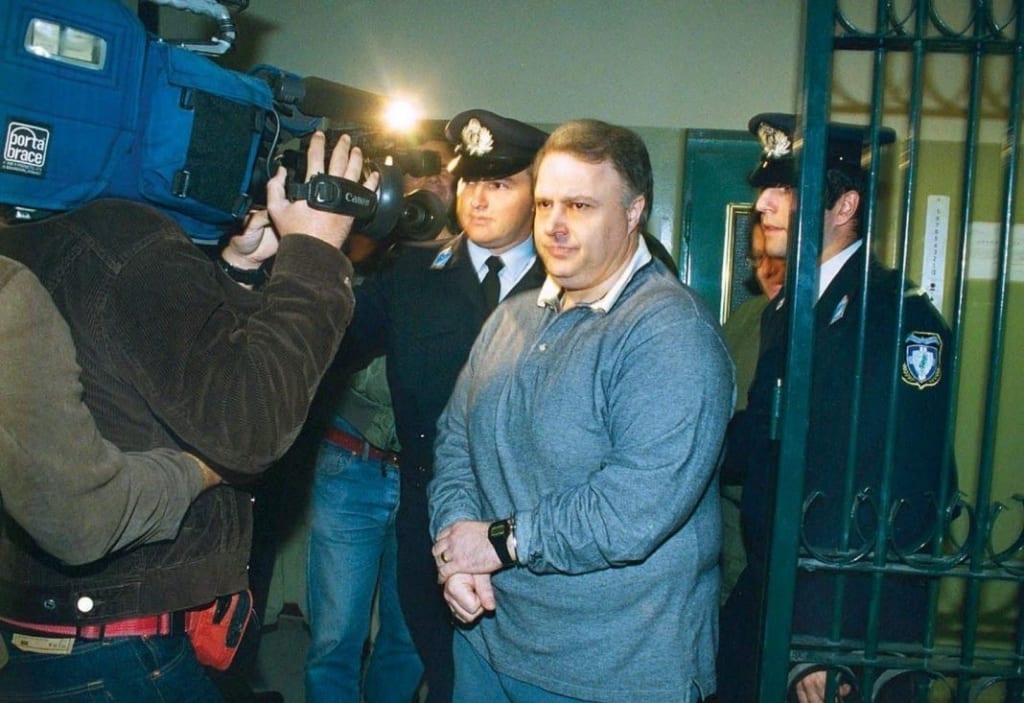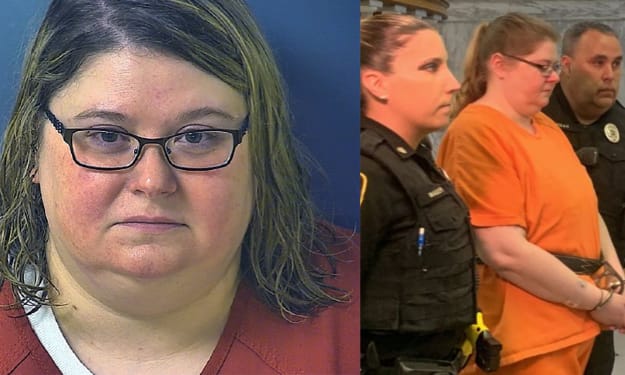Catch Me If You Can (Greek Edition)
The story George Koskotas, a poor kid who immigrated to America with his family in 1969 from Greece. Reaches the top through forgery and political corruption but eventually, he loses everything.

Many of you might have seen the movie, Catch Me If You Can, a 2002 American biographical crime comedy-drama directed and produced by Steven Spielberg, starring Leonardo DiCaprio and Tom Hanks. The screenplay by Jeff Nathanson is based on the "autobiography" of Frank Abagnale, who claims that before his 19th birthday, he successfully performed cons worth millions of dollars by posing as a Pan American World Airways pilot, a Georgia doctor, and a Louisiana parish prosecutor. The movie version is based on Abagnale's book of the same name published in 1980. If I did not know that the story was based on this book, I would be pretty sure that Spielberg might have been influenced by a similar story of George Koskotas, our story's protagonist that unfortunately his story has not been dramatized yet.

Poor Beginnings
George Koskotas was born on October 3, 1954. A poor kid who immigrated to America with his family in 1969 from Greece. He started working as an oil painter to make ends meet for himself and his family. At the same time, he studied until he managed to obtain a degree in economic sciences. Koskotas returned to Athens from New York in June 1979 at the age of 25, in September of the same year, Koskotas was hired at the Bank of Crete, as head of the Internal Audit and Foreign Exchange Department of the Accounting Department. Our protagonist Koskotas, seemed to be really inventive and he impressed with his financial knowledge the then-owner of the Bank, shipowner Yannis Karras, as well as the then-managing director, Professor Georgios Kalamotousakis but he forgot to mention to them that back in America despite his young age, Koskotas committed 64 criminal offences, mainly fraud, forgery, impersonation and embezzlement.
Some said at that time, Koskotas is proof that "in Greece, you are whatever you say you are.
The Bank of Crete
In just 3 years in 1982, he took over as Accounting manager, at the same time, Koskotas worked with the well-known journalist and son-in-law of Konstantinos Mitsotakis, the father of the now Prime Minister Kyriakos Mitsotakis, Pavlos Bakoyannis.
In 1984, two years later, he did the impossible at the age of just 30, he made a proposal to the owner of the Bank of Crete, Ioannis Karras, to buy the bank itself. The shipowner and owner of the bank had no idea that the money that Koskotas gave him, was the bank's own money that Koskotas had embezzled from him through various accounting tricks while working there.
The money was 33 billion drachmas. When Koskotas became president and CEO of the Bank of Crete in 1984, the bank had a network of 35 branches. Including some of them abroad.
Four years later, in 1988, he was approaching 90 branches and had expanded to London and Frankfurt. The Bank of Crete also bought the historic "King George" hotel in Syntagma Square in Athens.

On October 8, 1987, Koskotas was in Washington, D.C., guest of the then US president himself Ronald Reagan. While Koskotas was entering the White House, accompanied by a correspondent who was in the United States the journalist Alexis Papachelas. Our protagonist was arrested by IRS agents for the 64 crimes he had committed while living in the US until 1979. Koskotas was later released on $1 million bail, but his passport was withheld, so he could not leave the US until the relevant trial took place. Koskotas, however, would not sit idly by. He went to the Greek embassy in Washington accompanied by Papahelas, where he reported that he lost his passport.
When he manages to return back to Greece, while his passport was still supposed to be withheld by the American authorities, according to Koskotas, the then Prime Minister Andreas Papandreou, gives him a "sacred mission". Koskotas had to buy the majority of the stocks of Olympiacos FC, one of the biggest football teams in Greece. The government, again according to Koskotas, wanted to build a new stadium for the team, in order to attract more votes for the upcoming national elections. Koskotas raised 4 billion drachmas for the project, and in November 1987 he bought Olympiacos. Those who follow European football, would be familiar with this team, which is one of the biggest teams in Greece.
Lagios Detari
A few months later, thousands of football supporters gathered in centre of Piraeus in adulation for the new star signed by their beloved team. Olympiacos had put off a footballing coup by bringing to Greece one of the biggest stars at the time, the Hungarian midfielder Lagios Detari.
On July 13, 1988, more than 50,000 delirious fans gathered at Korai Square in Piraeus to welcome Detari whose signing cost the Greek club the astronomical amount of 1.1 billion drachmas. Detari, wearing the famous red and white shirt of Olympiakos with the Number 10 on his back, came out on the balcony milking in the crowd’s applause.

The Revenge of the Editors
The traditional editors of the other newspapers, following the rapid ascent of Koskotas, search his past and investigate the present. On August 1, 1987, almost all daily political newspapers (except those of Koskotas) published an open letter from 5 editors to Prime Minister Andreas Papandreou, denouncing the "Koskotas phenomenon". The 5 editors were Georgios Bombolas ("Ethnos"), Christos Lambrakis ("Ta Nea", "To Vima"), Christos Tegopoulos ("Eleftherotypia"), George Kouris ("Tomorrow") and Aris Voudouris ("Eleftheros Typos").On October 8, 1987, Koskotas was in Washington, D.C., a guest of US President Ronald Reagan at the White House. While entering the White House, he was arrested by IRS agents for the 64 offences he had committed while living in the US until 1979. The news of Koskota's arrest has been leaked out in Greece for over a year now, and the publishers of the remaining newspapers now began to request government and prosecutorial intervention for the financial control of his businesses.

Preliminary examination
On July 11, 1988, the head of the Athens Appeals Prosecutor's Office, Dimitrios Tsevas, based on a series of headlines in "Eleftherotypia", ordered a preliminary examination for the criminal acts attributed to Koskotas by the publications. The findings were a puzzle for Koskotas. It was revealed that he had embezzled a total of 33.5 billion drachmas from the Bank of Crete! Koskotas hastily sold the Bank of Crete to the contractors Christos Arfanis and Nikos Chionis, "Grammi S.A." to the shipowner Yiannis Alafouzos and PAE Olympiacos to businessman Argyris Saliarelis. The latter fled Greece with his private jet on November 5, 1988, first for Brazil and then for the USA.
The end
On October 20, 1988, Koskotas was indicted on five counts of forgery and embezzlement and was suspended from the position of bank chairman. On November 7, he eluded a 24-hour guard at his house and fled the country. He picked up his wife and five children in Switzerland. From there the Koskotas family went to Rio de Janeiro. On November 24, Koskotas and his family were apprehended by the Federal Bureau of Investigation in Bedford, Massachusetts after landing in a private jet at Hanscom Field. After his arrest, Koskotas was jailed at the Essex County Correctional Institution in Salem, Massachusetts. He was later transferred to Federal Correctional Institution, Danbury in Danbury, Connecticut.
After his arrest, Koskotas fought his extradition, arguing that the charges were political and that he would face assassination if returned to Greece. On August 24, 1989, United States magistrate judge Joyce Alexander ordered that Koskotas be extradited to Greece to face charges. Alexander's decision was upheld by United States district court judge Douglas Woodlock on June 27, 1990.
In January 1992, Koskotas was convicted of forgery and sentenced to five years in prison.[10] In November 1994 he was found guilty of embezzlement and forgery and sentenced to 25 years in prison. He was paroled and released from prison on March 16, 2001, after serving 12 years of his 25-year sentence. Koskotas is barred from leaving the country and was ordered to report to an Athens police precinct twice a month.
After credits scene: Colombia
The story of Stavros Koskotas.
George was the only one... from the Koskotas family who paid for his illegalities. But not the only wanted person. Many do not remember or do not know the existence of his brother Stavros, George's right hand in all activities. He was a vice president in all kinds of banking, publishing and sports businesses.
An arrest warrant was issued against him in 1990, before his brother was extradited to Greece. The warrant referred to "the criminal act of accepting the proceeds of a crime of continuous criminal embezzlement of a particularly large value for personal gain, consecutively and jointly, to the extent of a felony, at the expense of a Greek bank."
But it was never possible to execute it. Stavros was already missing, with a disappearance... of a cinematic level. An injunction against him followed to keep his arrest warrant in effect. Where he went and where he was hiding for 25 whole years (!), only he and his relatives know.
All the scenarios, however, were based on Latin America. Bolivia was heard, but the Colombian version is more likely, as Stavros's wife, Luz Helena, is from there, specifically from Medellin. The information even wanted Luz, his wife, to be the daughter of a prominent man of Medellin, at a time when the city (and not only it) was being run by the famous drug lord, Pablo Escobar.
It is proven that the infamous cocaine cartel of Medellín opened batches with Greek shipowners for the transport of drugs in those years, as Greece, along with Spain, were the first gateways to Europe for the powder arriving from Latin America. Some of these shipowners were even arrested and convicted on the charge that tons of heroin were found on their ships. Escobar had developed relationships with several Greeks, who served as links in the transport of drugs from Colombia through Brazil or Panama to the US and Europe.
Some even lost their lives when, in 1991, Escobar began a relentless manhunt against the righteous and the unrighteous, murdering civilians, police officers and associates, who he suspected might have spoken to the authorities about his arrest.
Stavros Koskotas was never arrested. He lived under trial for 25 years and in June 2014 he was cleared of all charges, as after this period of time, his crimes became statute-barred!

Written and Published by Sergios Saropoulos
About the Creator
Sergios Saropoulos
Philosopher, Journalist, Writer.
Found myself in the words of C.P. Cavafy
"And if you find her poor, Ithaka won’t have fooled you.
Wise as you will have become, so full of experience, you’ll have understood by then what these Ithakas mean"






Comments
There are no comments for this story
Be the first to respond and start the conversation.